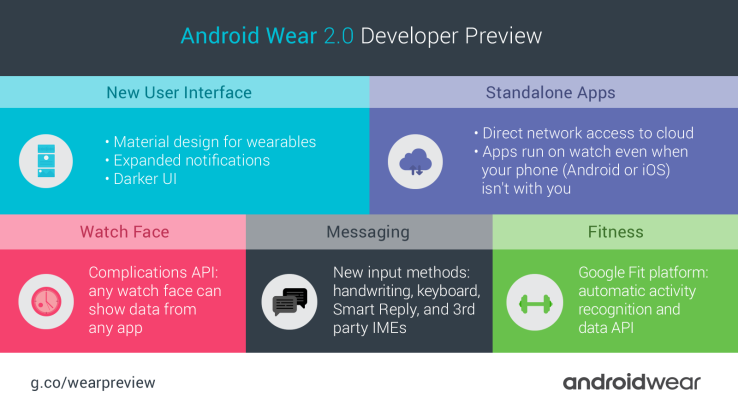

Google will debut two “flagship smartwatches” running Android Wear 2.0 in the first quarter of 2017, according to a new report from The Verge, citing information direct from Android Wear product manager Jeff Chang. The two new watches won’t be Pixel devices, as some have speculated, but will sainted carry the branding of a company that Google is working with to manufacture the devices – much more like a Nexus launch than what Google did with its Pixel and Pixel XL smartphones this year.
The device maker Google is working with for these debut Android Wear 2.0 smartwatches isn’t yet known, as Chang only told The Verge that the partner has created Android Wear devices in the past; that’s a fairly long list at this stage, however, including both most major Android smartphone OEMs, and watchmakers including Fossil, Nixon and Casio.
Google worked with this unnamed OEM on the hardware and software design of their devices, according to the report, which is again very similar to how the search giant operated the Nexus program for Android in the past. With the Pixel, it opted instead to handle hardware and software design entirely on its own, and partnered with HTC only for final manufacturing and assembly.
Android Wear 2.0 will be pushed out to other Android Wear-based smartwatches after it debuts on these new flagship partner devices, with a long list of hardware eligible for the upgrade. The software will add support for standalone apps, Android Pay, Google Assistant and more.
Chang was upbeat on wearables in the interview with The Verge despite growing signs that the device segment is not taking off with consumers, saying that wearables as “a category of product is here with us to stay.” Independent smartwatch maker and category pioneer Pebble also closed shop this year, as its talent and IP were acquired by Fitbit.
Android Wear 2.0 has been in developer preview for some time now, and the feature list doesn’t look to offer anything substantially ground-breaking in terms of proving that smartwatches do indeed have something essential to offer ordinary users. But Google directing hardware direction more closely could produce some more interesting results, so we’ll see what they come up with in 2017.

